PDF chapter test TRY NOW
Vector:
What do you think is the deadliest animal for humans? You may think it is either lion or a shark. But mosquito is the deadliest organism for the human. Mosquito is killing human by spreading diseases such as Malaria, Dengue, Chikungunya. These diseases are called as vector borne diseases. In this topic we are going to explore about the vector borne diseases.
Vectors are living organisms which act as intermediate carriers of infectious agents. They transfer the infectious agents from one human to another human or from an animal.
Vectors can be an insect or an animal. Diseases such as malaria, filaria, chikungunya, dengue are transmitted through insects, and the diseases are transmitted by through animals are bird flu and swine flu.
Note: Pathogens stick to flies bodies as they sit on garbage, and these pathogens are then transferred to food when the flies sit on it again.
Insect vectors:
Example:
Mosquitoes, lice, ticks, and fleas.
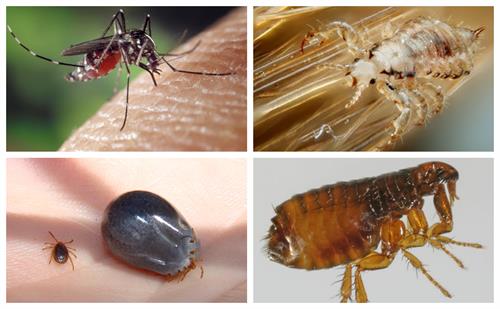
Top left to right : Mosquito and lice; Bottom left to right - Ticks and fleas
Animal vectors:
Example:
Monkeys, bats, pigs and birds.
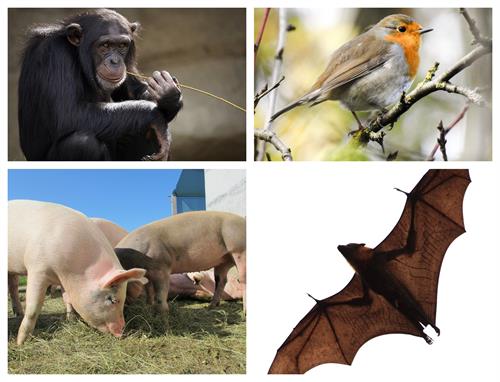
Top left to right: Chimpanzee and bird; Bottom left to right - Pig and bat
How it is spreading the disease: Vector such as mosquitoes do not carry the pathogen from its birth. During a blood meal from an infected person, mosquito gets ingested with the pathogen, and when it bites an animal or healthy person, the pathogen will transmit into them. Thus disease-producing microorganisms are transmitted through vectors.
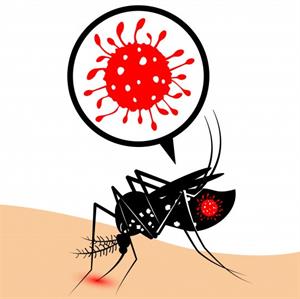
A mosquito bite carrying an infectious agent
Vector-borne diseases:
Diseases which transmit from one human to another human through vectors are called as vector-borne diseases.
Comparison airborne, waterborne and vector borne diseases
In this topic, we will study about the following vector borne diseases.
- Malaria
- Dengue
Malaria:
(300\) million people infected with malaria around the world. It may be fatal disease to human beings, but the cure is available.
Causative organism of Malaria:
Protozoan parasite Plasmodium causes Malaria. There are four different species of Plasmodium, namely,
a) P.vivax
b) P.malariae
c) P.falciparum
d) P.ovale
a) P.vivax
b) P.malariae
c) P.falciparum
d) P.ovale
Note: Malaria caused by Plasmodium falciparum is malignant and fatal.
Plasmodium falciparum is a unicellular protozoic parasite of humans and the deadliest Plasmodium species that causes malaria in humans. The parasite causes the disease's most dangerous form, falciparum malaria. Falciparum malaria is associated with more parasites in the blood and has the highest death rate and complications of all malaria types.
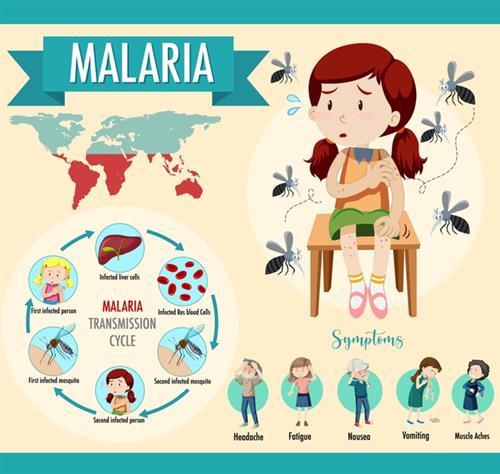
Malarial transmission cycle and symptoms
How it spreads:
The malarial parasite spreads through the bite of the female Anopheles mosquito, which feeds on human blood. All Plasmodium species can survive in stored blood, even if frozen, and retain their viability for at least 1 week, possibly well over 10 days. When a mosquito carrying the malarial parasite bites a person, it enters into the person's bloodstream. It is then carried to the liver, where the parasite multiplies. Then it will be transmitted to the next mosquito from the infected person through its blood meal, and the cycle continues.
Initial symptoms of Malaria:
- Headache
- Nausea
- Muscular pain
- Chillness and shivering
After the initial symptoms, there will be a rapid rise in body temperature. The fever subsides with profuse sweating.
Treatment: Use of Quinine drugs kills the stages of the malaria parasite.
Sir Ronald Ross:
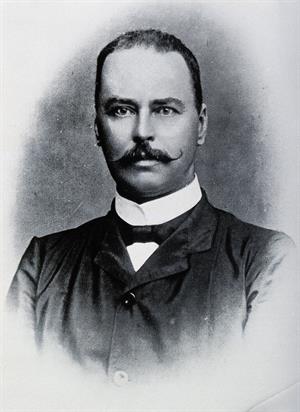
Photograph of Sir Ronald Ross
Sir Ronald Ross was an Indian born British doctor who is famous for his work concerning malaria. He worked in the Indian Medical Service for 25years. He identified the developing stages of malarial parasite in the gastrointestinal tract of mosquito and proved that malaria was transmitted by mosquito. Sir Ronald Ross awarded the Nobel prize for Physiology or Medicine to work on malaria transmission in 1902.
Dengue:
Dengue virus causes dengue fever and dengue haemorrhagic fever. Dengue is a vector-borne disease transmitted from one human to another human through the vector mosquitoes. It is also called as breakbone fever. The name break bone fever is because of the contortions caused due to the intense joint and muscle pain. Dengue haemorrhagic fever is a more severe form of the disease, and it can be life-threatening or fatal.
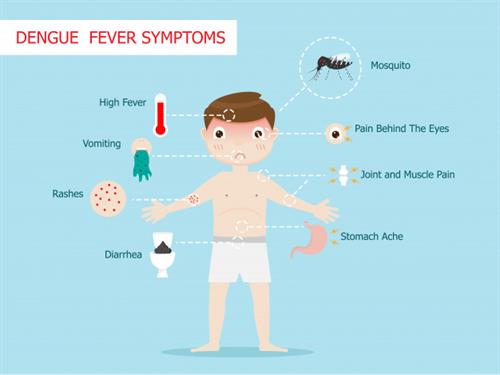
Symptoms of dengue fever
Causative organism: Dengue virus (DENV) It is a single positive-stranded RNA virus.
Vector: Aedes aegypti mosquito
How it spreads: Dengue is transmitted by infected Aedes aegypti mosquito. If a mosquito had a blood meal from an infected person, it is called an infected mosquito.
Incubation period: Incubation period of the dengue virus is generally\ 5 to 6 days.
Symptoms:
- Onset of high fever
- Severe headache
- Muscle and joint pain (breakbone fever)
- Rash and other haemorrhagic manifestation
- Fall in blood platelet count are the symptoms associated with this disease.
- Vomiting, diarrhoea and abdominal pain
- Difficulty in breathing
- Pain behind eyes
- Mild bleeding from the gums, nose and below the skin causes mild spots on the skin
Treatment: Paracetamol will be prescribed to reduce fever and body ache. Complete rest is needed and also increased intake of fluid is essential.
Herbal facts on Dengue treatment (Source: AYUSH)
An extraction of tender leaves of papaya and herbal drink Nilavembu Kudineer is given to dengue patients. It is known to increase the blood platelet count.
Reference:
https://upload.wikimedia.org/wikipedia/commons/6/6e/Sir_Ronald_Ross._Photograph._Wellcome_V0028781.jpg
https://www.freepik.com/free-vector/malaria-transmission-cycle-symptom-information-infographic_11403525.htm
https://www.freepik.com/free-vector/malaria-transmission-cycle-symptom-information-infographic_11403525.htm
https://www.flickr.com/photos/sanmartin/4900275659
https://upload.wikimedia.org/wikipedia/commons/c/c0/Tick_before_and_after_feeding.jpg
https://upload.wikimedia.org/wikipedia/commons/2/2d/Ganga_bird_06.jpg
https://pixabay.com/photos/chimpanzee-monkey-ape-mammal-zoo-3703230/
https://pixabay.com/photos/pigs-alp-rona-furna-sow-happy-pig-214350/
https://upload.wikimedia.org/wikipedia/commons/b/bf/Flying-Fox-Bat.jpg
https://www.freepik.com/premium-vector/close-up-virus-mosquito-sucking-human-blood_9830897.htm
